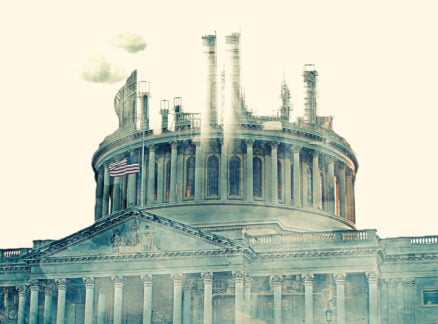
September 17, 2019
Chicago Architecture Biennial Preview: Activism
Researchers, historians, and publishers at the biennial seek to forge closer connections between activism and the architectural profession.
In the run-up to the Chicago Architecture Biennial 2019, which opens on September 19, Metropolis presents a series of previews of the themes running through the event. For exhibitors at this year’s biennial, the “art” of building is hardly innocent. From resource management to property relations, these works reveal a more complex reality.

Architecture begins with land, and perhaps no conversation about architecture in Chicago can take place without acknowledging the original custodians of the region—the indigenous communities that were displaced by European settlers. That mechanism of expulsion has operated throughout the history of the United States, so as the 1956 Indian Relocation Act displaced indigenous communities in other regions, the city became home to the largest urban Native population in the country.
“Chicago offers itself as a particularly salient place to explore indigeneity and settler colonialism in the history and present of the United States,” say historians and University of Michigan educators Ana María Léon and Andrew Herscher, who will present a research initiative called the Settler Colonial City Project at this year’s Chicago Architecture Biennial.

They have created their contribution in collaboration with the American Indian Center (AIC), the country’s first Native community center. With the AIC’s help, Léon and Herscher hope to demonstrate to visitors “that there is an Indigenous knowledge of and politics around land and life that opens onto very different and, we believe, sustainable and equitable futures that are crucial for us to work towards.”
This is something that activism and architecture share—what begins as specific to a site can end up having a much broader resonance. The biennial showcases the healthy stream of advocacy within architecture today, as intellectuals and activists probe deeper into the connections between space and politics, and between the local and the global.

“I was not trained for this, but again, I was not really trained for anything I currently do,” jokes Léopold Lambert, whose contribution sits alongside the Settler Colonial City Project. Lambert is the founder of the well-regarded bimonthly magazine The Funambulist. His biennial exhibit draws on essays from the magazine’s past 24 issues, as well as new articles commissioned for the event in Chicago.
The Funambulist’s mission is to build a “bridge between the politics of space and the politics of bodies,” Lambert says. Its latest issue, “Futurisms,” spans contributions from Palestine to New Zealand while touching upon monument building, the future of indigenous communities, and artificial intelligence.

That broad scope is characteristic of activism today, and architects, among others, are beginning to realize that there is no such thing as a single-issue struggle. This, of course, makes the task of progressive architecture exceedingly complex. Conversations like the ones at the biennial remind us that architecture can be wielded in ways that violate the rights of both humans and nature—but also that the future lies in facing up to those concerns in constructive, collaborative ways.
You may also enjoy “Chicago Architecture Biennial Preview: Housing.”
Would you like to comment on this article? Send your thoughts to: [email protected]









